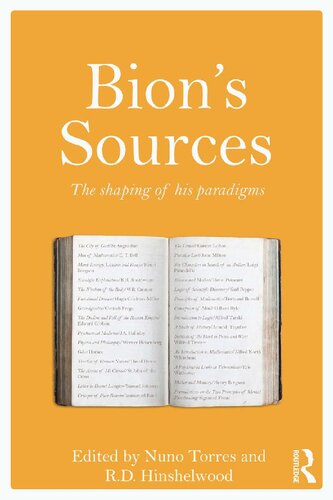

Most ebook files are in PDF format, so you can easily read them using various software such as Foxit Reader or directly on the Google Chrome browser.
Some ebook files are released by publishers in other formats such as .awz, .mobi, .epub, .fb2, etc. You may need to install specific software to read these formats on mobile/PC, such as Calibre.
Please read the tutorial at this link: https://ebookbell.com/faq
We offer FREE conversion to the popular formats you request; however, this may take some time. Therefore, right after payment, please email us, and we will try to provide the service as quickly as possible.
For some exceptional file formats or broken links (if any), please refrain from opening any disputes. Instead, email us first, and we will try to assist within a maximum of 6 hours.
EbookBell Team

4.1
20 reviewsThere are an increasing number of publications concerned with the work of Wilfred Bion (1897-1979). Many have sought new ideas from his writing however, little attention has been paid to the intellectual context in which Bion wrote.
Bion’s Sources traces where Bion’s new ideas came from, what job he required of them, how successfully he used his context and how that has fertilised psychoanalysis. Expert contributors provide chapters on areas of the intellectual context separate from or adjacent to clinical psychoanalysis in Britain which have clearly influenced the texts Bion left (those published in his life time, or subsequently). Chapters explore the influences deriving from Wilfred Trotter, Henri Bergson and process philosophy, Kurt Lewin and group dynamics, Immanuel Kant, R. B. Braithwaite and the philosophy of science, the mathematics of notation and transformation, as well as the work of psychoanalysts who have applied their theories to social science, psychosomatics, and literature and the humanities.
By contextualising Bion in the wider culture of ideas, and removing him from the exclusive world of Psychoanalysis, Bion’s Sources aims to moderate his ‘genius’ by showing how it was shaped by very wide influences. This book will be of interest to psychoanalysts, clinicians and those interested in the history of psychoanalytic ideas.